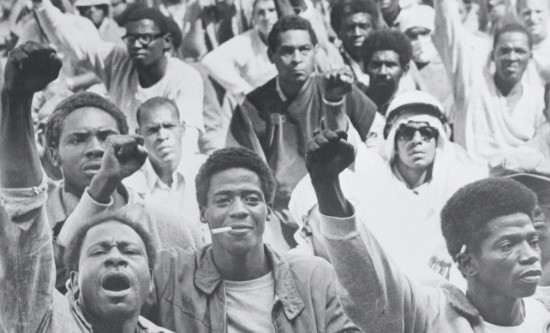
Traditionally the radical left, in Britain especially, have failed to support or recognise the prison struggle as an integral part of the wider class struggle or understand prisons as essentially instruments and weapons of class oppression, which maintain and enforce the power of the capitalist state. This ideological vacuum critically undermines and weakens the ability of the working class to seriously challenge the capitalist apparatus of raw state power.
If a single event revealed the revolutionary potential and significance of the prison struggle, it was undoubtedly the Attica Prison Uprising of 9 September 1971 in New York State, when prisoners rose up and declared Attica a liberated zone in the wider class and black liberation struggle then being openly fought in the US. The murderous response of the US state to the Attica rebellion also reflected the clear understanding and recognition by that state of the revolutionary dynamic and significance of the uprising and its potential to ignite wider rebellions beyond Attica’s walls.
On 9 September 1971 most of the prison population of Attica rose up and seized control of the prison, taking 42 members of staff hostage. What originally fuelled the uprising was the dehumanising and barbaric treatment suffered by Attica prisoners and the vicious racism of an all-white force of guards; 54% of those incarcerated at Attica were African Americans and 9% were Puerto Rican. During a period of growing prisoner activism in US jails at the time, Attica was used to concentrate and brutalise prisoner ‘trouble-makers’.
The spark that ignited the Attica Uprising was the murder by guards of legendary revolutionary prisoner and Black Panther Party member George Jackson at San Quentin State Prison on 21 August 1971. The day after Jackson’s murder, 700 Attica prisoners participated in a hunger strike in his honour.
What then began as a rage-fuelled riot was soon transformed into an extremely well-organised political action, as racial divisions and gang conflict amongst prisoners dissolved into a collective brotherhood and unified revolutionary force. Once prisoners had taken over Attica they organised a list of demands for officials to meet before they would surrender, and elected spokesmen to represent them at negotiations, whilst also appointing medics and security to ensure the safety of hostages. The spirit of the Attica prisoners during the uprising was clearly voiced by 21-year-old Elliot James ‘LD’ Barkley, who was just weeks away from release before the uprising and was murdered by state forces during their recapture of the prison:
‘We are men! We are not beasts and we do not intend to be beaten or driven as such. The entire prison populace — that means each and every one of us here — has set forth to change forever the ruthless brutalization and disregard for the lives of the prisoners here and throughout the United States. What has happened here is but the sound before the fury of those who are oppressed.’
The courage and solidarity of the prisoners who rose up and took control of Attica for four days transformed it from a place of repression and suffering for the most oppressed and marginalised into a place of liberation and freedom. This is why the state responded so murderously to the rebellion. After four days, state governor Nelson Rockefeller ordered in armed police, who while retaking the prison massacred 43 people: 33 prisoners and 10 guards or civilian employees. Some prisoners were murdered while trying to save the lives of hostages.
Subsequent exposure of official information revealed the extent of the state’s awareness of the Attica uprising as a political rebellion. During the very first day of the uprising, the FBI sent memos about it to the army, navy and air force, to the CIA, Attorney General, Vice President and the President himself, Richard Nixon. In taped conversations with aides, Nixon justified the Attica massacre: ‘You see, it’s the black business again. He [Rockefeller] had to do it.’ Nixon hoped it would send a message to activists generally, or to those he described as ‘the Angela Davis crowd’, whilst also having ‘a hell of a salutary effect on future prison riots’.
US historian Heather Ann Thompson, author of Blood in the Water: The Attica Prison Uprising of 1971 and Its Legacy writes: ‘At this time there was a great deal of activism inside prisons. The US government was absolutely consumed with this idea of the left and activists taking over the country. The entire apparatus of the government is deeply fearful of and hostile to the civil rights movement. Add prison activism to this and they think the world’s coming apart at the seams, and the Nixon Tapes revealed just how deeply worrying Attica was, even to the US President, who said: “The word is around that this [Attica] is the signal for a black uprising.”’
What the Attica Prison Uprising represented to the US state was the spectre of a political rebellion amongst the most oppressed and disempowered, prisoners, spreading beyond the prison walls to the communities of the poor and disadvantaged in wider capitalist society.
On the 50th anniversary of the Attica Prison Uprising, we as revolutionaries must embrace that spectre and support the prison struggle as a revolutionary and legitimate frontline of the struggle against the capitalist state.
John Bowden
Fight Racism! Fight Imperialism! No 284, October/November 2021




